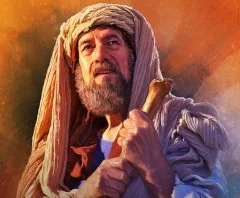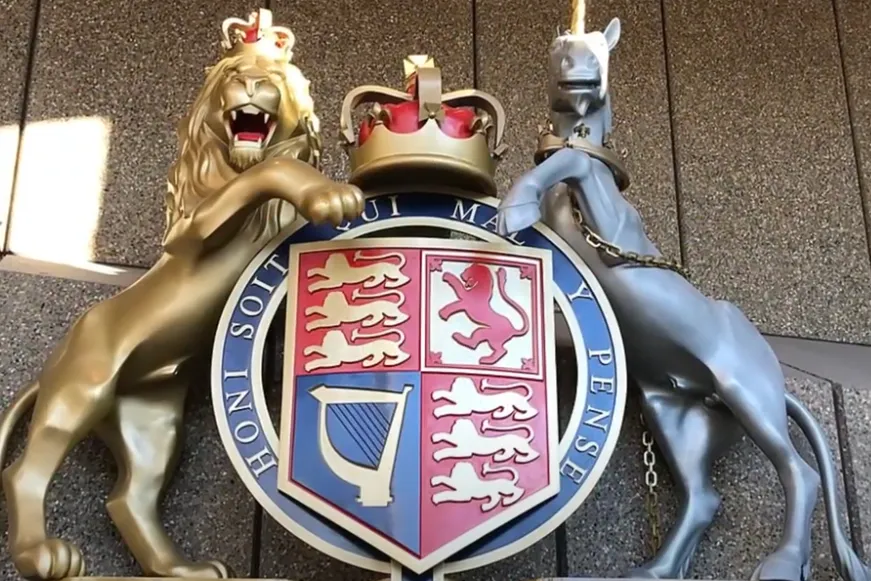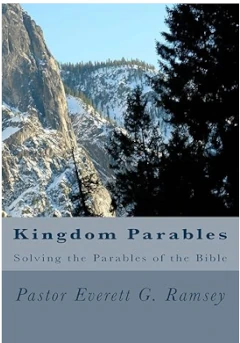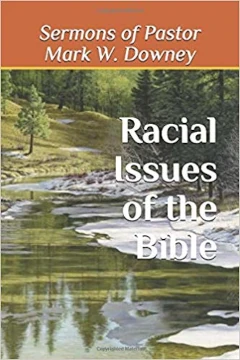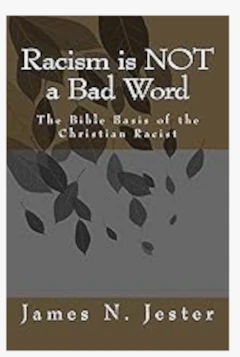Paul's Missionary Journeys - Part 9
Third Missionary Journey, Part Two: Journey to Rome
Copied from the sermon notes of Pastor Don Elmore
August 10, 2025
Scripture Reading: Matthew 28:1-7
- “In the end of the sabbath, as it began to dawn toward the first day of the week [very early on our Sunday morning when it was still dark; Jesus had already risen]; came Mary Magdalene and the other Mary[referring to Mary, the mother of James and Joses] to see the sepulchre.
- And, behold, there was a great earthquake: for the angel of the Lord descended from heaven, and came and rolled back the stone from the door, and sat upon it.
- His countenance was like lightning, and his raiment white as snow:
- And for fear of him [the angel] the keepers did shake, and became as dead men.
- And the angel answered and said unto the women, Fear not ye: for I know that ye seek Jesus, which was crucified.
- He is not here: for He is risen, as He said. Come, see the place where the LORD lay.
- And go quickly, and tell His disciples that He is risen from the dead: and, behold, He goeth before you into ______?______; there shall ye see Him: lo, I have told you.”
Why did the keepers shake, as they saw the angel from heaven, and become as dead men? Wouldn’t one reason be because the angel’s countenance was like lightning and his raiment was very white? It was something that they saw that was alien. It had not come from earth but had descended from heaven. The keepers had a condition like Catalepsy as they shook in fear.
And where did this angel tell the two Marys to inform His disciples where to meet their risen Savior? It was in Galilee. Why do you think that the disciples would meet the risen Jesus, about 100 miles to the north, instead of in Jerusalem of Judaea, where He was crucified and rose from the dead? Because Jesus had said that it was too dangerous to be in Jerusalem.
John 7:1: “After these things Jesus walked in Galilee: for He would not walk in Jewry [Judaea], because the Jews sought to kill Him.”
Our nation will soon have “anti-Semitic” laws that will declare that anyone who says anything against the Jews will go to prison. Well, they will have to ban the Bible, because it is very “anti-Jewish.” The first five books of the New Testament (Covenant) reveal multiple attempts by the Jewish authorities to have both Jesus and his chosen vessel, Paul, murdered, like in this verse (see part seven of this series).
Answers in Genesis started about 30 years ago in one small part of a strip mall in Florence, Kentucky. It was there that they sold their merchandise and started their outreach to churches. They opened their Creation Museum to the public in 2006 at a cost of $27 million, and the Noah’s Ark Exhibit opened in 2017 at a cost of over $100 million. The Museum opened with no debt because they built the Museum as they received the money. But for the Ark, AiG borrowed 62 million dollars on bonds from their “supporters”, i.e., the city of Williamstown, who AiG will pay back with interest, with 75% of their property tax going to this cost, over the next 15 – 30 years.
Next on their agenda, in 2026, is the indoor model of Jerusalem during Jesus’ time and then they will build the Tower of Babel. I will quote what they say on their website about this exhibit of three-part model of Jerusalem:
“They will follow Jesus’ ministry in Jerusalem and learn about archaeological finds confirming the Bible’s history.”
But Jesus’ ministry wasn’t in Jerusalem, but rather to the north in Galilee. There was a lot of activity at the end of his ministry in Jerusalem, but that was not where His ministry occurred. The disciples were informed to go where they were from and meet Him in Galilee. It was there that Jesus:
- Walked on the top of the water in the Sea of Galilee,
- Changed water into wine at the end of a marriage ceremony when they ran out of wine,
- Feed 5,000 men and women and children with two fishes and five loaves of bread,
- Healed a demoniac and cast demons into swine,
- Healed a palsied man that was let down from the roof,
- Demonstrated the transfiguration,
- Preached the Sermon on the Mount,
- Raised the widow’s son from death,
- Spoke a series of seven parables from a fishing vessel,
- Provided a miraculous catch of fishes after the fishermen had caught none,
- Raised Jarius’ daughter and healing a woman with an issue of blood,
- Etc., etc., etc.
And most Christians have never thought where the twelve apostles went to fulfill the commission given them by their Kinsman Redeemer. The Bible doesn’t give us much information about where they went, if fact, it doesn’t tell us anything about where some of them had their missionary journeys.
First, here is a list of the twelve disciples of Christ:
- Simon (who is called Peter)
- Andrew (Peter’s brother)
- James, the son of Alpheus
- Bartholomew
- Philip
- Matthew, the tax collector
- Thomas
- James, son of Zebedee
- John, (brother of James), son of Zebedee
- Thaddaeus
- Simon
- Judas Iscariot (who was replaced by Matthias after he committed suicide)
Second, here is where the disciples went, as told by Book Three of the Church History of Eusebius.
Simon, called Peter: There are reports of some of his experiences and miracles that are given in the Bible. He had the vision of the “unclean animals” which gave to him the new view that, after seven hundred years, the “unclean Israelites” were now made clean by the blood of Jesus Christ. Simon Peter preached in Asia Minor and Palestine. Peter was crucified upside down at his request since he did not feel worthy to die in the same manner as his LORD. He never went to Rome; that was Simon Magus not Simon Peter.
Andrew: Went to the land which is now called the Soviet Union. Christians there claim him as the first to bring the gospel to their land. He also preached in Asia Minor and Greece, where he is said to have been crucified.
James, the son of Alpheus: Was one of at least three James referred to in the New Testament. There is some confusion as to which is which, but this James is reckoned to have ministered in Syria. Josephus reported that James was stoned and then clubbed to death.
Bartholomew: Had widespread missionary travels attributed to him by tradition: to India with Thomas and back to Armenia, Ethiopia, and Southern Arabia. There are various accounts of how he met his death as a martyr for the gospel.
Philip: Had a powerful ministry in Asia Minor and in Carthage in North Africa. He converted the wife of a Roman proconsul in Hierapolis, an ancient city in Southwest Turkey (see map below). In retaliation, the proconsul had Philip arrested and cruelly put to death.
Matthew: A tax collector, and writer of a gospel ministered in Persia and Ethiopia. Some of the oldest reports say he was not martyred, while others say he was stabbed to death in Ethiopia.
Thomas: Was probably most active in the area east of Syria. Tradition has him preaching as far east as India, where the ancient Martoma Christians revere him as their founder. They claim that he died there when pierced through with the spears of four soldiers.
James, the son of Zebedee: Was a fisherman by trade along with his brother John. James spread Christianity in Spain. James was the first of the Apostles to be martyred being beheaded by the Jews in Jerusalem.
John, the son of Zebedee: Was the only one of the Apostles who died a natural death from old age. He was the church leader in the Ephesus area. During Domitian’s persecution in the middle ‘90s, he was exiled to the island of Patmos. There he is credited with writing the Gospel of John, three letters, and the last book of the New Testament – the Book of Revelation.
Thaddaeus: Was missionary to Edessa (modern-day Iraq, northeastern Syria, southwestern Turkey and Southwestern Iran). Various traditions and legends suggest he was martyred, by being beaten to death with a club and then beheaded.
Simon the Zealot: Ministered in Persia and was killed after refusing to sacrifice to the sun god.
Matthias: was the apostle chosen to replace Judas. Tradition sends him to Syria with Andrew and to death by burning.
Then there was the Apostle Paul, who was not one of the twelve disciples of Jesus, but spent over 11 years studying and preaching after his conversion. He spent time in Arabia and Damascus, Syria, and a quick trip to Jerusalem, a preaching tour of southern Galatia, and one year in the church at Antioch, Syria before he was called by God to go on his three journeys and his trip to Rome. He ministered to the Israelites, who were in modern-day Turkey, Macedonia and Achaia in modern-day Greece, and Cyrus, Crete, Malta, and modern-day Italy. Paul was born in the city of Tarsus in modern-day Turkey.
Saul became famous in Palestine because of his persecution of Christians. But then things changed dramatically. By God’s providence, Saul became a Christian after a supernatural encounter with Jesus on the road to Damascus (Acts 9).
After persecution of the Christians in Jerusalem, including one of the church’s deacons, Stephen, some believers ended up living in the city of Antioch (Syria). A “great number” believed in Jesus (Acts 11:21). When the apostles in the church of Jerusalem heard about this, they sent Barnabas to Antioch to serve in that church (Acts 11:22).
Barnabas was a prophet (Acts 13:1) and an apostle (Acts 14:14) who was born on the island of Cyprus. Through his ministry a “great number of people were brought to the Lord” (Acts 11:24).After being in Antioch for a while, Barnabas traveled to Tarsus to find Paul. Paul had gone to Jerusalem after his conversion to meet some of the leaders of the church of Jerusalem, but the Jews attempted to kill him. So, he was taken out of Jerusalem by his brethren and sent to Caesarea and then by ship to his home in Tarsus, Asia Minor.
Later Barnabas recruited Paul to come teach, lead and serve in the church in Antioch in Syria (Acts 11:25-26). Paul relocated to Antioch sometime between 44 and 46 A.D. and served as one of the leaders of the church.
In those days prophets from Jerusalem came to Antioch. One of these was a man by the name of Agabus, who was led by the Spirit that there should be great scarcity of provisions throughout all the world(Acts 11:28).
But that can’t be the correct interpretation for the Greek word, “οἰκουμένην”, (world) as shown by many illustrations. Here is just one.
Antiquities of the Jews: 20:2:5; Josephus:
5) “Now her (Queen Helena, queen mother of Adiabene,…) coming was of very great advantage to the people of Jerusalem; for whereas a famine did oppress them at that time, and many people died for want of what was necessary to procure food withal, Queen Helena sent some of her servants to Alexandria [Egypt] with money to buy a great quantity of corn, and others of them to Cyprus, to bring a cargo of dried figs …”
If the famine was all over the world, how did Queen Helena of Adiabene send servants to Alexander, Egypt to buy a great quantity of corn and others to Cyprus to buy dried figs? This famine must be understood to refer to Judaea. The disciples so understood it for no preparations were made for themselves in Antioch or any other place.
So, the disciples in Antioch, Syria determined to send drought relief unto the brethren in Jerusalem. Paul and Barnabas were chosen to take the necessary supplies to them. After accomplishing their endeavor, these two missionaries brought back John Mark from Jerusalem to the church in Antioch, Syria. Sometime around 46 A.D., Barnabas and Paul were set apart by the prophets and teachers of the church, who fasted, prayed, and laid their hands on them being sent forth by the Holy Spirit (Acts 13:3, 4). They were sent out on their first missionary journey by the church at Antioch, and took John Mark with them.
The Book of Acts then tells of two more missionary journeys made by Paul and his journey to Rome on his appeal to Caesar. The Bible is a history book that tells the story of the people of the Abrahamic covenant, Israel, and their wicked seed enemy impersonators.
This same battle has been going on for millenniums. Notice the following statement made by one of the early identifiers of mainly Jewish Communists in our Israelite nation:
JOSEPH MCCARTHY’S STATEMENT
A few Christians, many Christian-Identity, believe what Catholic Senator, Joseph McCarthy, said shortly before he died (1957):
“The confession of General Cornwallis to George Washington at Yorktown has been well hidden by historians…
Jonathan Williams recorded in his [book], LEGIONS OF SATAN, 1781, that Cornwallis revealed to Washington that…
‘Your churches will be used to teach the Jew’s religion and in less than two hundred years the whole nation will be working for divine world government. That government that they believe to be divine will be the British Empire. All nations will be permeated with Judaism without even being noticed by the masses, and they will be under the invisible all-seeing eye of the Grand Architect of Freemasonry’…
Darby and the Plymouth Brethren brought a Jewish Christianity to America. Masons Rutherford and Russell started Jehovah Witnesses’ Judaism which is now worldwide with their message of the divine kingdom. Mason Joseph Smith started Mormon Judaism with its Jewish teaching of millennialism. At the turn of the twentieth century there appeared the Scofield Bible with a Jewish interpretation of the prophecies. With the wide use of this ‘helpful’ aid all the American churches have silently become synagogues. We now have Baptist Jews, Methodist Jews, Church of God Jews, Catholic Jews and many Protestant Jewsthroughout America. We are all aliens in our own country because of false religion. All are praying for divine deliverance into that ‘Divine Government’ which Cornwallis knew to be the British Empire [under the control of the Jewish usurybankers]. A false religion has been used to deceive us into allegiance to our enemies of Yorktown and Bunker Hill.”
The Legions of Satan was removed from the U.S. Library of Congress in the late 1980s.
PAUL FINISHES HIS THIRD JOURNEY
After Paul finished his farewell speech to the elders of the church of Ephesus at Miletus, he sailed to the island of Cos, and the day following to the famous island of Rhodes, and from thence unto Patara in southern Asia Minor.
As a point of interest, the island of Rhodes had the famous Colossus of Rhodes, a bronze statue of the sun god Helios, which was toppled by an earthquake that occurred about 226 BC. The ruins remained in place for approximately 800 years. Eventually, in 654 A.D., an Arabian force raided the island of Rhodes and had the statue broken up, with the bronze sold for scrap.
The Colossus of Rhodes
And after finding another ship, Paul, along with Luke, sailed past Cyprus and landed at Tyre, Syria. After spending one week with the church there, the men from the church brought their wives and children and kneeled about Paul and his companions in a farewell prayer.
Acts 21:5:
5) “And when we had accomplished those days, we departed and went our way; and they all brought us on our way, with wives and children, till we were out of the city: and we kneeled down on the shore, and prayed.”
Paul’s group then sailed to Ptolemais and then travelled overland to the city of Caesarea, the capital of Roman Judaea, where Cornelius, had become a Christian. They stayed in the house of Philip, the evangelist. Here at Philip’s house, a prophet named Agabus came from Judaea and prophesied to Paul both in words and by acting it out. This was not the first time they had met. Fifteen years earlier, while at the Antioch (Syria) church, Agabus’ prophecy of a famine resulted in Paul and Barnabas being sent by the church in Antioch to take a gift to the Christians living in Judaea.
Notice from these lessons that one’s responsibility as a Christian is to help other Christians first. Now, here they are together again in Caesarea with Agabus prophesying. Agabus used Paul’s belt to tie up his hands and feet. The prophecy was that the Jews (who else?) in Jerusalem would also tie Paul up.
Despite his close friends warning, Paul continued his desire to go to Jerusalem. Some disciples from Caesarea accompanied Paul on the 62-mile trek to Jerusalem and took him to stay in the home of a man called Mnason (who was from Cyprus).The day after arriving in the capital city, Paul went to the church of Jerusalem. Paul saw James and met with all the elders.
False rumors by the Jewish leaders about Paul defiling the temple led to an angry mob beating him. The Jews accused Paul of polluting the holy place by bringing Trophimus (who was from the house of Israel born in Ephesus) into the Temple (Acts 21:29). They were of the wrong opinion that Trophimus was a non-Israelite who was forbidden to go in the Temple on pain of death. The Jews threw Paul out of the Temple and were about to beat him senseless, when Paul was rescued by government soldiers. Paul had to be carried bodily up the stairs to keep the crowd from killing him.
The Roman chief captain came and took Paul and commanded him to be bound by two chains, each hand chained to a soldier. And then he questioned who Paul was and what he had done (verse 33). The multitude were crying different things, but Paul asked the captain if he could speak to the people. The captain granted him permission to speak.
Paul gave a summary of his life before he was converted, his miraculous conversion and what God had told him about his purpose in life. When Paul told his audience that God called him to go to the former divorced house of Israel, the Jews went berserk. They (the Edomite/Judeans or Jews) demanded Paul to be killed once again.
The captain rescued Paul just in time and announced that Paul would be beaten with whips until he was ready to tell the whole truth. But Paul asked the centurion if it was lawful for them to scourge a man that is a Roman citizen who had not yet been found guilty of anything (Acts 22:25). All those who had participated in Paul’s arrest and examination were frightened. Paul remained a prisoner, but he could not be punished until he had been tried.
So, Paul was taken the next day to the Jewish Sanhedrin to find out what Paul had done. After a brief tussle with the High Priest, Ananias, Paul pit the Sadducees against the Pharisees in an argument over bodily resurrection and angels. The two groups got so worked up that due to their great dissension, the chief captain, fearing that Paul would be pulled in pieces by them, rushed down and took him by force from them and took him to a place of safety.
Then it got even worse. More than forty of the Jews bound themselves with a curse (Acts 23:12-14), saying that they would neither eat nor drink till they had murdered Paul. But Paul’s married sister’s son, his nephew, heard of the Jews’ plan to murder him when they brought Paul to the council the next day. Paul’s nephew told his uncle, and Paul instructed him to tell his guard. Because of this testimony, the Romans quickly got Paul out of Jerusalem (that night) and off to Caesarea.
They were escorted by 200 soldiers, 70 horsemen, and 200 spearmen (Acts 23:23).Nothing is mentioned in the Bible as to what happened to the forty Jews for, they would have all died as Paul lived for many years after they made their oath. It is my opinion, for I do not know, that none of them kept their oath.
The soldiers left with Paul at 9 PM and traveled throughout the night till they got to Felix the governor (Acts 23:23) in Caesarea. There Paul is brought before Felix, and later Festus and king Agrippa, with many of the Jewish authorities bringing a barrage of charges against him.
Acts 26:6, 7:
6) “And now I [Paul] stand and am judged for the hope of the promise made of God unto our fathers:
7) Unto which promise our twelve tribes, instantly serving God day and night, hope to come. For which hope’s sake, King Agrippa, I am accused of the Jews.”
Notice that Paul said that he was falsely accused by the Jews for believing the promise made to the TWELVE tribes of Israel. This is a definite statement against universalism, as Paul is saying that the promise which he ministered belongs only to the twelve tribes of Israel and not to all the nations of the world, which included Edomite/Judeans or Jews. The nations descended from the twelve tribes of Israel; those are the nations to whom Paul brought the Gospel of the Kingdom. Israel and Jews are not synonymous; they are eternal enemies.
In chapter twenty-four, we read about Paul’s interactions with the Governor of Judaea: Felix. In Caesarea, Governor Felix refused to decide concerning Paul’s guilt or innocence. This was probably just a simple tactic to extract a bribe from Paul.
Acts 24:26: “He [Felix] hoped also that money should have been given him of Paul, that he might loose him: wherefore he sent for him the oftener, and communed with him”
For two years, Paul languished in prison, until Felix was recalled to Rome and replaced by a new Governor, Festus (Acts 24:27).
In chapter twenty-five, the new governor, Festus, went to Jerusalem where the religious leaders were still looking for a way to execute Paul. Festus heard their complaints and offered to convene court in Caesarea. Soon thereafter, Festus sat on the judgment seat and heard their case.
Acts 25:7: “And when he [Festus] was come, the Jews which came down from Jerusalem stood round about, and laid many and grievous complaints against Paul, which they could not prove.”
Paul forcefully defended his innocence. Several days later, King Agrippa and his wife, Bernice, came to Caesarea and paid a courtesy call on Festus. In convincing detail, Paul told the king about another King, one who was “…the first that should rise from the dead” (Acts 26:23). Afterwards, Agrippa and Festus said that this man had done nothing worthy of death or bonds. And Agrippa said that “…this man might have been set at liberty, if he had not appealed unto Caesar” (Acts 26:31-32).
In Acts 27:1, Festus placed Paul and the Roman escorts on a freighter ship that would make many stops along the way to Italy, dropping off and picking up goods.
Acts 27:1, 2:
1)“And when it was determined that we should sail into Italy, they [Governor Festus and his administration] delivered Paul and certain other prisoners unto one named Julius, a centurion of Augustus’ band.
2) And entering into a ship of Adramyttium, we launched, meaning to sail by the coasts of Asia; one Aristarchus, a Macedonian of Thessalonica, being with us.”
Location of Adramyttium (Upper right, above Pergamum)
This was the first of three ships that Paul would sail on as he went on his journey from Caesarea to Rome. This first ship was from Adramyttium, which was located near Assos in Asia Minor.
The story continues as Luke recounts some of the details of their travel. They went to Sidon, sailed under Cyprus, sailed over the sea of Cilicia and Pamphylia, came to Myra, a city of Lycia. While there, they changed ships and got on the second ship of the voyage: a larger grain ship of Alexandria sailing into Italy.
On this other ship from Alexandia (Egypt), they sailed slowly for many days, and came to Cnidus, on a long narrow peninsula in Asia of Asia Minor, sailed under Crete, over against Salmone, and eventually came to Fair Havens, which was near the city of Lasea. When they got there, the Mediterranean was very tempestuous. Sailing after this date was proverbially dangerous.
Based on this above information, Paul addresses the crew stating that it seems clear that their voyage is headed for disaster. However, it seems the captain believed he could get them closer to Italy without harm. Therefore, the centurion listened to the advice of the captain rather than to the words of Paul. So, they left Fair Havens and set sail for the city of Phoenix on Crete to winter there.
Fair Havens was a poor harbor for wintering, but there was a better place to winter just 100 miles to the west of Crete. In verse 13 a favorable wind helped them on their way to Phoenix, however, the weather quickly changed as a violent northeast wind rushed upon them.
The storm lasted for two weeks. Luke writes that the ship became unmanageable, and they had to ride it out as the wind took the vessel wherever it pleased. They went south of the island of Clauda and out to sea (Acts 27:16).
The men on the ship did all they could to keep the ship afloat. The crew tied ropes to the vessel to help keep it from breaking apart in the violent storm. The crew then let down the anchor to help keep the ship from drifting too far out to sea. The storm was so bad that the crew jettisoned any extra cargo from the ship including the main mast and its rigging.
By verse 20 of Acts 27, hope becomes lost upon the crew. They do not believe they are going to make it through this storm. It is amid this despair that Paul reminds the crew that they should have heeded his words. However, Paul can offer encouragement because an angel of God told Paul that he must stand before Caesar and all people on the ship will not lose their lives. But they are not going to immediately get to their destination for they will run aground on some island.
We do not read that the crew believed the words of Paul. Fearing that they would run aground in a rocky place, some of the sailors tried to escape the ship by getting on the lifeboat. Paul warns the centurion that unless these men stay on the ship, all who leave the ship at this time will not be spared. The centurion wisely listens to Paul this time and cuts the ropes holding the lifeboat to prevent anyone from escaping.
A little bit later, the 276 people on the ship, knowing that shipwreck is imminent, throw the grain overboard to lighten the ship. Not knowing where they are, the crew sees a bay with a beach and attempts to run the boat ashore there. Running into a reef, the ship becomes jammed, and the waves begin to break up the stern. The soldiers planned to kill all the prisoners so that no one would escape.
However, the centurion wanted to save Paul, and he kept the soldiers from carrying out their plan. Those who could swim were ordered to swim to shore while the rest would float on the planks and debris from the shipwreck to shore. Once ashore, the crew finds out that they are on the island of Malta.
The local people of Malta show kindness to the shipwrecked crew, providing them with a fire and hospitality. But while Paul was gathering wood and laying it on the fire, a viper came out of the sticks and fastened onto his hand. (Acts 28:1-3). What a life that the Apostle Paul had. He is bitten by a poisonous snake after all the problems he had on the ships that were taking him to Rome!
The immediate reaction of the local people was that Paul was a murderer, and justice was coming to find him. However, Paul shook the viper from his hand into the fire and suffered no harm. The locals expected Paul to have his hand swell up or to be killed by the snake bite. Seeing that nothing happened to Paul, the local people changed their minds and believed that Paul was a god (Acts 28:4-7).
Not far from where the ship had wrecked was the estate of Publius, who was the ranking Roman official on the island. When he learned of the refugees he took them to his home for three days. While there, Paul was instrumental in healing Publius’ father, who had fever and dysentery. This news brought out all the sick in Malta, and Paul had a great healing ministry there (Acts 28:8, 9).
After the winter months ended, Paul’s group set sail on another Alexandrian grain ship which had wintered there. This was the third ship of their journey. This ship’s sign was Castor and Pollux (Acts 28:11). Remember, Walter told us about these two men.
To briefly refresh your minds, Castor and Pollux, known together as the Dioscuri, were twin brothers in Greek mythology. They shared the same mother, Leda, but had different fathers. Castor was the mortal son of Tyndareus, King of Sparta, while Pollux was the divine son of the Greek god Zeus. Their twin sisters were Helen of Troy and Clytemnestra.
Helen’s abduction by Paris, which sparked the Trojan War, is indirectly linked to Castor and Pollux. Both had left the party that was held earlier, leaving Helen alone with Paris, who then took her to Troy. The Greeks and Trojans fought for ten years. Unable to breach Troy’s walls, the Greeks devised the famous wooden horse strategy. They left the horse as an apparent offering to the gods and feigned retreat. The Trojans brought it into the city, unaware that Greek warriors were hidden inside. At night, the Greeks, emerged, opened the gates, and sacked Troy, ending the war.
Castor and Pollux were known for their close bond and were often depicted as protectors of travelers, especially sailors, and as patrons of athletes. They were often called upon for help during sea voyages. Many ships had statues of these two twins on their vessels as this one did.
They were associated with the constellation Gemini, which represents the twins. For more information about these twins, listen to or read Walter’s sermon, “Twins” on our website: www.fgcp.org.
Constellation of Gemini
They sailed to Syracuse, Sicily, then to Rhegium, Italy and then to Puteoli, Italy where they found some brethren and stayed with them for one week. At Puteoli, the heavy grain ships discharged their cargoes. The rest of the journey would be made by land; a one hundred forty-mile journey to Rome from Puteoli.
They were joined with other brethren in Appi Forum, (40 miles from Rome) and The Three Taverns (33 miles from Rome) in Italy: when Paul saw the crowds that gathered, he thanked God and took courage (Acts 28:12-15).There were doubtless hundreds of towns like Puteoli, where there were Christian churches, founded by nameless missionaries.
Peter and Paul didn’t do it all. There were other missionaries that the Bible doesn’t mention that were traveling all over the Roman world, from India to England, establishing churches.
Finally, (what a trip!), Paul reaches Rome. Once in Rome, Paul was permitted to stay by himself with the Roman soldier who guarded him. After three days, Paul summoned the Judean leaders and gave an explanation as to why he had come to Rome and why he was in chains (Acts 28:10-20).
For two more years Paul welcomed all who visited him. He proclaimed the kingdom of God and taught about the things concerning the Lord Jesus Christ with all boldness and without any hindrance. The Book of Acts ends with this verse:
Acts 28:31: “Preaching the kingdom of God and teaching those things which concern the Lord Jesus Christ, with all confidence, no man forbidding him.”
Luke doesn’t write of Paul’s death. One will have to look at non-biblical books that give details of his demise. Paul’s missionary journeys in the Bible covered mainly the lands of Syria, Asia Minor, Greece and Italy, along with the islands of Crete, Cyrus and Malta. Two years after Paul’s death (which was a beheading), Jerusalem was destroyed by the Roman Army (70 AD).
CONCLUSION
There is a map (below) that shows where the disciples and apostles mainly went after the resurrection of Jesus the Christ to fulfill their commission. They were told to “Go ye therefore, and teach all nations…” (Matthew 28:19).
What nations were they to go to? They certainly didn’t go to all the nations in the world, but to all the nations, mostly to the Roman Empire, where the Israelites had been scattered. Most of them, from the divorced House of Israel and some from the House of Judah, had migrated to these lands from their captivities over the last seven centuries prior to the birth of their Savior.
In the beginning of this sermon, the locations were given of where the disciples of Jesus had gone. It was to both houses (Judah and Israel) of Israel that were in Europe, western Asia, northern Africa, India, and the middle east. There were no disciples and in later centuries, any missionaries went to middle and southern Africa, middle and eastern Asia, South America, or North America. Christianity was a white man’s religion until it exploded into major universalism shortly after the 1600s. By the 1800s there were Christian universalists, which believed that all human beings would ultimately be saved and restored into a right relationship of God. They reasoned that there was no hell.
So the question is, who is the New Testament written to, if the disciples didn’t go to all the different nations of the world? To answer that question, it is important to know who the Holy Spirit chose to be the authors of the New Testament (Covenant).
First, there were the four gospels that were written by Israelites:
- Matthew: Tax collector who was one of the twelve disciples of Jesus. He was an Israelite from the tribe of Benjamin.
- Mark: Went with Paul and Barnabas on the first part of their first missionary journey. Went with Barnabas on his second. Is said to have received most of the information for his gospel from Peter, his mentor. Mark was an Israelite from the tribe of Levi, born in Cyrene, Libya. He was one of the seventy disciples of Jesus.
- Luke: Was an Israelite physician. He traveled with Paul on most of his journeys, except for the first. He also wrote his gospel from many sources as he was not an eyewitness of Jesus’ ministry. He was one of the seventy disciples who was probably born in Antioch of Syria.
- John: One of the disciples of Jesus. He was an Israelite from the tribe of Benjamin.
Then the Book of Acts would tell of the missionary efforts of some of the apostles, but mainly of Paul:
Acts: This book was written by Luke, who also wrote the Gospel of Luke. He was an Israelite from the former House of Israel.
All the nine letters (books) were written by the Apostle Paul to seven of the churches (house of Judah and House of Israel) that he had visited on his four journeys in the New Testament:
- Romans: Rome, Italy
- Corinthians: Corinth, Achaia,
- Greece, Two letters
- Galatians: Galatia, Middle of Asia Minor, Turkey
- Ephesians: Ephesus, City in the Western part of Asia Minor, Turkey
- Philippians: Philippi, Macedonia, Greece
- Colossians: Colossae, City in Southwestern Asia Minor, Turkey, and
- Thessalonians: Thessalonica, Macedonia,
- Greece, Two letters.
And who were the three people that the Apostle Paul wrote to that are now books in the Bible?
Timothy: Was a co-worker of Apostle Paul. He had a mother who was an Israelite Judaean and a father who was Greek (from the House of Israel). He was born in Lystra, Galatia (Turkey). There were two letters written to him.
Titus: Was a co-worker of Apostle Paul. He was very effective in the work in Crete and in Corinth, as well in other places. He was born an Israelite of the House of Israel.
Philemon: Was a wealthy, Greek (Israelite of the House of Israel), resident of Colossae who owned slaves, including Onesimus. His slave, fled from him, went to Rome, became a Christian under the Apostle Paul, and then Paul wrote to Philemon to take him back as a slave and brother in Christ. He had a church in his home.
The rest of the books were written by the person identified as the title of the letter, except for the Book of Hebrews and the Book of Revelation:
Hebrews: Were descendants of Eber who later became the descendants of Jacob/Israel. The author is unknown.
James: This letter was written by James, the brother of Jesus. He was an Israelite born of the tribe of Judah. His letter was addressed “to the twelve tribes which are scattered abroad” (James 1:1).
Peter: These two letters were written by Peter who was born in Galilee. He was born an Israelite from the tribe of Benjamin. He wrote to the Israelites who were living in Asia Minor, in the provinces of Pontus, Galatia, Cappadocia, Asia and Bithynia.
John: John wrote all three of these letters, the previously mentioned Gospel of John, and the Book of Revelation in which in writes to the seven churches that are in Asia Minor. He was born an Israelite from the tribe of Benjamin, and
Jude: He wrote a letter that is known as his name. He was a brother of Jesus and was born an Israelite from the tribe of Judah.
Since Israelites were chosen by God to write all the books of the New Testament, twenty-seven, then how do the Judeo-Christians get the notion that the Bible says that Christianity is for all the nations of the world? If that were true, don’t you think that the Holy Spirit would have chosen at least one non-Israelite/non-Adamic person to write at least one of the books?
And there is one more thing that they teach which destroys the entire narrative of the Bible. Christendom says that all the seed of Cain and all the Nephilim (giants) and everyone else drowned in the worldwide flood of Noah. There were only eight people on the earth, 4300 years ago, living in modern-day Iraq. All eight were of the same family and probably had a mid-brown skin color. That means that there were no Caucasians, no Orientals, no Hispanics, no Negroes, no Kenites, no Pacific Islanders, no giants, etc. alive at this time. There were no people or animals except in modern-day Iraq. Is this a Jewish myth?
But after the Tower of Babel, one hundred one years after the flood, they were separated from the Tower by different languages and “somehow” all the different races came into being when they went to various parts of the earth. But this included the Kenites, the descendants of Cain, not Adam, and the giants who were the descendants of neither Adam nor Eve. How can there be descendants of Cain, if all their descendants were drowned in the flood? The rest of the races are less than four thousand years old! Is this doctrine a Jewish myth? Yes, it is. And if one thinks about it for just a little bit, it becomes very easy to disprove.
Because Christendom believes these Jewish fables, they make the conclusion that all races are equal and have the same opportunity for salvation because they believe that they originated from the same source – Noah’s three sons and wives and Adam and Eve.
But they say on one hand that they don’t believe there is any certain people racially that are God’s people, and any certain people racially who are not His people. But on the other hand, they refer to the Jews as being God’s special people who are now in a parenthesis, and when God’s people are raptured out, the Jews will be dealt with by God.
As a result, they are unable to answer the following question: Who are the people who believe in the Talmud and Kabbalah, that our fathers, like Martin Luther, King Louis IX, and a host of Protestant reformers and today’s preachers like Pastor Ramsey, who emphatically declare that the individuals who hate our God and His laws so intensely that they should never be in our Israelite nations? These people represent the “enmity” that God put between the two seed lines as stated in Genesis 3:15. They are the modern-day impostors of Jacob/Israel. They were the people who constantly attempted to murder both Jesus and Paul in the Bible.
Satan’s lies: All races are equal. There is no genetic enemy of one race against another. There is only one race – the human race. This view was started by the Jews; Karl Marx, Theodor Adorno, Else Frenkel-Brunswik, Daniel Levinson, Nevitt Sanford, Stephen Jay Gould, Richard Lewontin, Jacques Derrida, Franz Boaz, Margaret Mead and the Frankfurt School which left Germany and came to Columbia University in New York, comprised of many Jews like Herbert Marcuse, Max Horkheimer, Erich Fromme, and Jurgen Habermas.
Therefore, Christians have been duped into believing there is no such thing as interracial marriages. “Jews” and “Gentiles” (non-Jews) are one in the church. Christianity is now for every race in the entire world. “Judaism” is Rabbinic Judaism, and the Talmud of Babylonia is the authoritative statement of the Torah that Judaism embodies.
The Talmud teaches the following, that the Jews try to keep hidden from Christians:
- Mary was a prostitute, who committed adultery with a Roman soldier by the name of Pandera and they had Jesus who was a bastard child.
- Their son was not divine,
- Their son was sinful and practiced magic,
- He blasphemed God,
- He is now in Hell, boiling in a cauldron of excrements, and
- Anyone who does not follow the Talmud will join Him in Hell.
Their theological view now agrees with what Christendom now teaches. Jonathan Williams’ book has come true. Here is Christendom’s view:
Here are the people that Christendom has forgotten – the race of God’s people:
Deuteronomy 7:6:
6) “For thou [the people of the everlasting Abrahamic covenant – Israelites] art an holy people unto the LORD thy God: the LORD thy God hath chosen thee to be a special people unto Himself, above all people that are upon the face of the earth.”
Christian Identity: All races were created at different times and had different parents. Israel and today’s Jews are eternal enemies. There is only one race, the White race, that God has chosen to be a special people unto Himself. They became His wife, and He became their God, Husband and King. His people were to be separated and were never permitted to marry people of another race.
The House of Judah and the House of Israel are now one in the church. Resurrection and restoration in the Kingdom of God is the Christian’s (Israelite’s) hope, while eternal life was promised to the entire Adamic race. All antichrists will go to hell. The Bible was written by the Israelites, for the Israelites, and of the Israelites. Christianity’s handbook is the Bible which is the source of all its beliefs.
Which one do you believe?
May the Holy Spirit open the eyes of His people.
Blessed be the LORD God of Israel.

